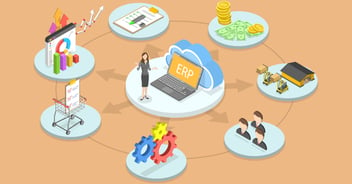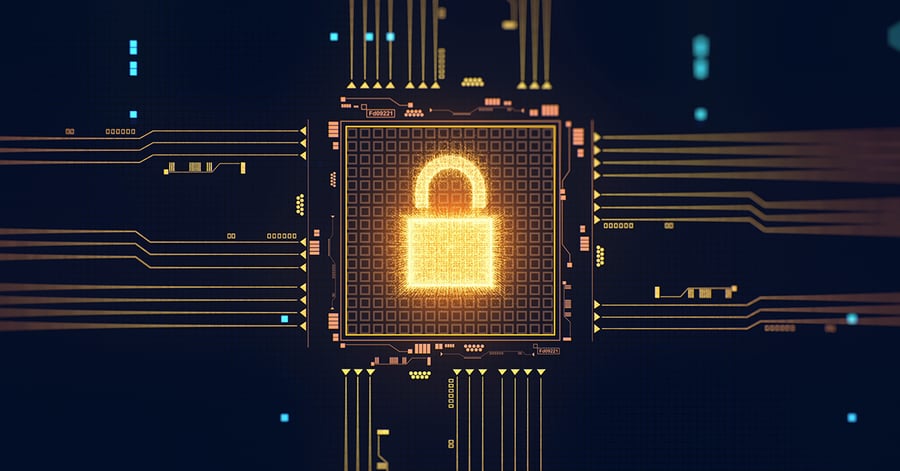
Growing Importance of Cybersecurity in Enterprise Asset Management (EAM)
Published :

Digitalization has been a boon for every industry across the world. While digitalization of machines and equipment is opening up a wide array of opportunities and facilitating exponential growth, it throws a significant challenge of keeping the assets’ data safe. Responding to the continued operational and financial stresses which are a consequence of the pandemic will require the management teams to be skillful and bold in equal measure. With this, the leaders are under great pressure to accelerate the speed of innovation, or otherwise, they may have to face irrelevance.
However, while devising innovative strategies and finding way-outs to be the outperforming business and set the benchmark, maintaining a robust security system is crucial. This can be seamlessly done through an enterprise asset management software integrated with a secure ERP system.
Since the time digitalization has taken over, the industrial companies have been at the center of cyber risks – basic email security and malware protection software barely solves the purpose. As the IoT (Internet of Things) becomes more prevalent in the industrial settings, the number of devices which can potentially be hacked is eventually increasing. In light of the Russia-Ukraine conflict, cyber-attacks have become more rampant.
It is believed by the experts that equipment, machinery, and assets specialists assessing the opportunities of the market should majorly focus on four key cybersecurity pillars in order to support continued innovation.
Many companies, especially small-and mid-cap still view cybersecurity as something to be left to the IT department. Boards may even hope that implementing some basic solutions will prevent the challenges from potential partners and customers. However, this is not enough to maintain the market-leading position in industries. The companies need to take a proactive approach to cybersecurity to leverage such capabilities with customers, who see cyber risk mitigation as the way out. One of such approaches can be deploying an agile enterprise asset management software along with a ERP system.
Although many companies are well-aware of the need to secure systems and machinery, management teams may be uncertain as to which steps need to be prioritized. While scoping cyber preparedness, it would be sensible to work alongside the sector-specialist partners for defining an appropriate ERP solution architecture. Once the system is up and running, white hat hackers and penetration testing can evaluate the protection level over hardware and software assets. Moreover, companies can further go into creating dedicated units that consult with R&D specialists and engineers as products and services are developed, playing the role of a facilitator of cyber competence and quality control.
A robust ERP system with a robust asset management software which offers best-in-class user experience, a secure cloud platform is the answer. Essentially, it offers an intuitive and intelligent application which proactively presents relevant information to the users based on their security privileges and role. Many EAMs in the market do not perform risk profiling and the impact of asset’s security breach on the supply chain. Hence, it is recommended to use advanced platforms such as Ramco EAM driven ERP solutions to secure your systems and extract the best out of your assets.
The management teams should seek to secure the internal operations which ‘keep the lights on’ first. However, the most effective cybersecurity measures for the industrial companies should go even further. They should account for the increasing number of the threat vectors that affect machinery and equipment. This can be successfully achieved with a granular view of how cybersecurity processes and solutions impact every product or service.
In turn, this means that the cybersecurity should be a significant factor of product architecture discussions, right through incorporating into the launches and marketing of product or services. If executed well, an ERP system integrated with a cybersecurity system delivers the best results across the value chain. Ignoring this would put the data and systems at risk besides damaging the customer relationships.
OT (Operational Technology) and IT systems are often treated as completely separate entities. With the passing time, attackers are focusing on disrupting the critical systems, and the advanced ransomware attacks can rapidly move from system to system. In order to mitigate the risk of a attack crippling production, it is essential for the businesses to adopt an overall view of all the security technologies and key systems. Without any robust ERP system and enterprise asset management software integrated with a cybersecurity system, the manufacturing companies are only as secure as their older piece of equipment or weakest industrial control system.
Ramco’s ERP software inclusive of enterprise asset management software proves to be the best-in-class solution. It facilitates effective maintenance management enhanced by inbuilt analytics and predictive maintenance, mitigates the equipment risks by competitive safety standards, increases regulatory adherence by utilizing asset tracking to keep it audit-ready, and streamlines operations. So, to manage your assets efficiently while keeping your data secure, look nothing beyond Ramco’s ERP solutions, a world-class and one-stop-solution.
Enterprise asset management (EAM) involves the management of mission critical assets of an organization throughout each asset's lifecycle. EAM is used to plan, optimize, execute, and track the needed maintenance activities with the associated priorities, skills, materials, tools, and information. The aim is to optimize the quality and utilization of assets throughout their lifecycle, increase productive uptime and reduce operational costs.
Enterprise asset management (EAM) involves the management of the maintenance of physical assets of an organization throughout each asset's lifecycle. EAM is used to plan, optimize, execute, and track the needed maintenance activities with the associated priorities, skills, materials, tools, and information.
The software helps in effective maintenance of assets through preventive, predictive, shutdown and breakdown maintenance strategies. The system also helps enterprises mitigate equipment risks by enhanced safety standards. The streamlined operations and improved asset performance helps organizations increase their investment effectiveness.
EAM is important because it helps organizations track, assess, manage and optimize asset quality and reliability. Asset intensive Organizations have hundreds, thousands, even millions of assets which needs to be maintained to maximize / optimize life of these assets to increase the return on investment.
The key features of effective EAM are:
Asset Intensive companies under the following Industries :
Contact us for a meeting and schedule a demo
This differs on case to case basis, based on the type of installation and unique industry specific requirements. Contact us for a meeting and schedule a demo.
This differs on case to case basis, based on the type of installation and unique industry specific requirements. Contact us for a meeting and schedule a demo.
Stay Connected, follow us on LinkedIn / Twitter to know more about EAM Software latest trends.

All Rights Reserved. © Copyright 2024. Ramco Systems.